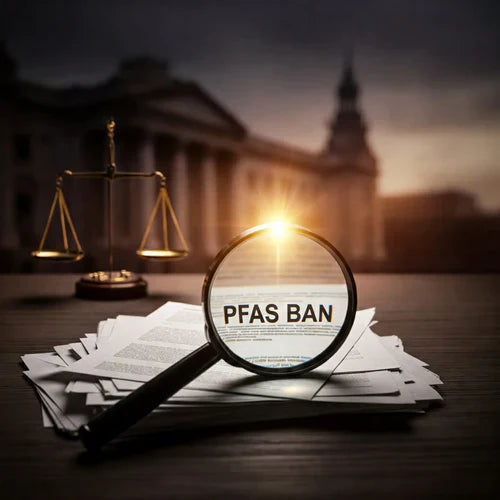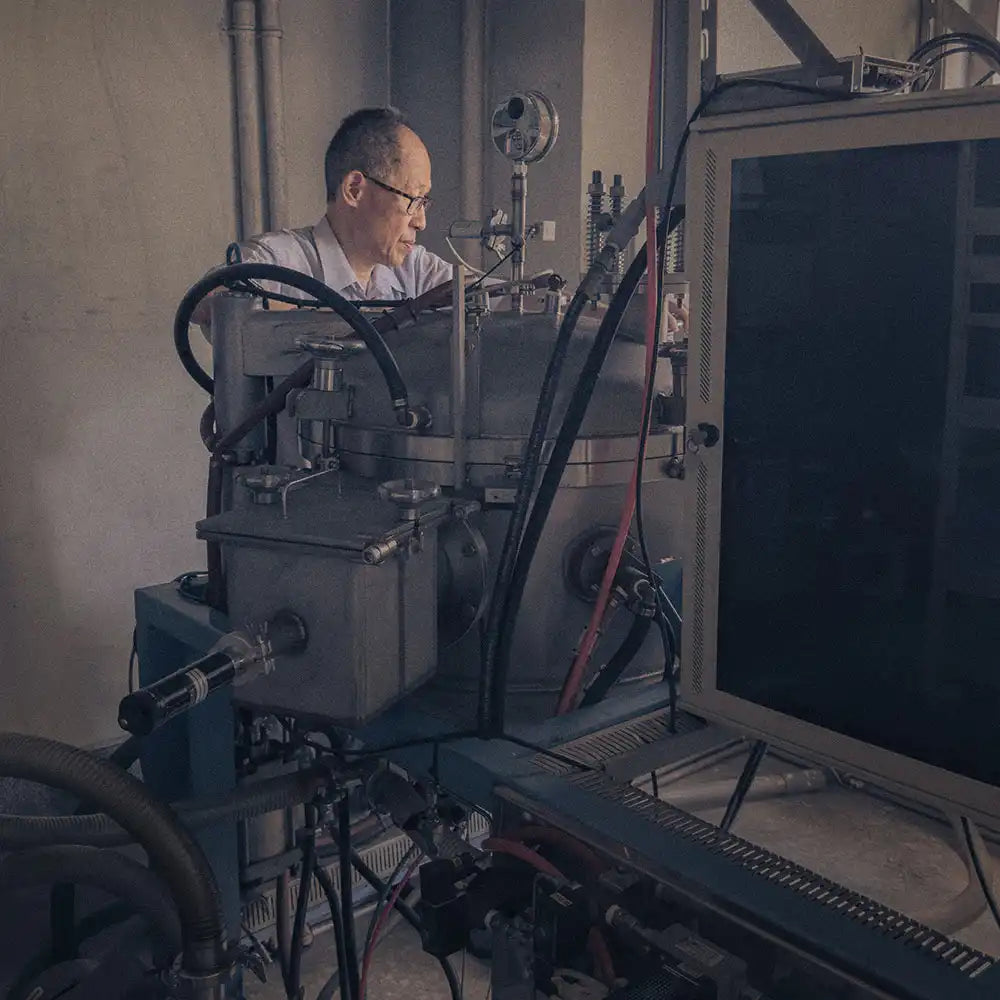
PFAS Regulations in the U.S. and Their Impact on Nonstick Cookware

Driven by Mounting Concerns About Potential Health and Environmental Risks, Per- and Polyfluoroalkyl Substances (PFAS) Face Increasing Regulatory Scrutiny and Restrictions. PFAS, a group of synthetic chemicals, have been widely used since the 1940s in various products, including nonstick cookware, stain-resistant fabrics, firefighting foam, and food packaging, due to their resistance to heat, water, and oil2. This article provides an in-depth look at the upcoming PFAS regulations in the United States, the reasons behind these restrictions, and their potential impact on the nonstick cookware industry.
Quick Takeaways
Why PFAS Are Regulated
- Health Risks: PFAS, or “forever chemicals,” are linked to immune system deficiencies, liver damage, reproductive issues, increased cholesterol, and certain cancers.
- Environmental Impact: PFAS persist in the environment, contaminating water, soil, and wildlife, leading to widespread ecological disruption.
- Human Exposure: Found in nonstick cookware, firefighting foams, textiles, and food packaging, PFAS pose significant risks through prolonged exposure.
Upcoming PFAS Regulations by State
- California: PFAS banned in menstrual products starting January 1, 2029.
- Colorado: Requires PFAS use reporting in carpets and rugs by July 1, 2024.
- Connecticut: Bans intentionally added PFAS in cookware, textiles, cosmetics, and more by January 1, 2028.
- Maine: Prohibits all PFAS in non-essential products by 2030.
- Maryland: PFAS banned in playground surfacing materials by October 1, 2024.
- Massachusetts: Requires reduction of PFAS in firefighter PPE by January 1, 2025.
- Minnesota: Bans all non-essential uses of PFAS, effective 2023.
- New York: PFAS prohibited in apparel and textiles by December 31, 2024.
- Vermont: Bans PFAS in carpets, rugs, and aftermarket treatments by July 1, 2024.
- Washington: PFAS banned in food packaging as of July 1, 2023.
Vacuum Brazed Diamond Cookware: The Best Nonstick Alternative
-
Why It’s Ideal:
- PFAS-Free: Avoids health and environmental risks linked to PFAS.
- Naturally Nonstick: Diamond’s smooth, inert surface eliminates the need for chemical coatings.
- Durable: Resistant to wear and scratching, ensuring long-lasting performance.
State-Level PFAS Regulations
Numerous states have taken the initiative to implement or are actively considering their own restrictions on PFAS. These state-level regulations often exceed federal requirements and focus on specific applications of PFAS in consumer products. This proactive approach reflects a growing trend toward stricter PFAS restrictions and demonstrates the commitment of individual states to safeguard public health and the environment1.
| State | Regulation | Effective Date | Products Affected | Specific PFAS Restricted |
|---|---|---|---|---|
| California | Prohibits the manufacture, sale, or distribution of menstrual products containing PFAS | January 1, 2029 | Menstrual products | All intentionally added PFAS |
| Colorado | Requires manufacturers of carpets and rugs to report on PFAS use | July 1, 2024 | Carpets and rugs | All intentionally added PFAS |
| Connecticut | Prohibits the sale or distribution of products containing intentionally added PFAS | January 1, 2028 | Apparel, carpets, cookware, cosmetics, dental floss, children’s products, and textile furnishings | All intentionally added PFAS |
| Maine | Bans the sale of products containing intentionally added PFAS | 2030 | All products except for unavoidable use | All intentionally added PFAS |
| Maryland | Prohibits the installation or sale of playground surfacing materials containing intentionally added PFAS | October 1, 2024 | Playground surfacing materials | All intentionally added PFAS |
| Massachusetts | Requires the reduction of PFAS in firefighter personal protective equipment (PPE) | January 1, 2025 | Firefighter PPE | All intentionally added PFAS |
| Minnesota | Bans all non-essential uses of PFAS | 2023 | All products | All intentionally added PFAS |
| New Jersey | Sets a maximum contaminant level (MCL) for PFAS in drinking water | - | Drinking water | PFOA, PFOS, PFNA, PFHxS |
| New York | Bans the sale of apparel and textiles containing intentionally added PFAS | December 31, 2024 | Apparel and textiles | All intentionally added PFAS |
| Vermont | Bans the sale of carpets, rugs, and aftermarket treatments containing intentionally added PFAS | July 1, 2024 | Carpets, rugs, and aftermarket treatments | All intentionally added PFAS |
| Washington | Bans PFAS in food packaging | July 1, 2023 | Food packaging | All intentionally added PFAS |

Reasons for Restricting PFAS
States are driven to restrict PFAS due to the mounting evidence of their detrimental effects on human health and the environment. PFAS have earned the moniker “forever chemicals” because they resist degradation in the environment and can persist for extended periods1. This persistence leads to the widespread contamination of water, soil, and air, posing risks to both human and ecological health8.
Immune System Deficiency
Studies have indicated that PFAS can hinder the immune system, increasing susceptibility to infections and diminishing the effectiveness of vaccines1. This immune suppression raises concerns about public health, particularly for vulnerable populations.
Liver Damage
PFAS have the ability to accumulate in the liver, potentially causing damage and leading to liver disease11. This accumulation can have long-term health consequences and contribute to the burden of liver disease.
Reproductive and Developmental Effects
Exposure to PFAS has been linked to adverse reproductive and developmental outcomes. Studies suggest associations between PFAS exposure and decreased fertility, pregnancy-induced hypertension, and developmental delays in children12. These findings raise serious concerns about the impact of PFAS on future generations.
Increased Cholesterol Levels
Research has shown a correlation between PFAS exposure and elevated cholesterol levels, a known risk factor for heart disease12. This association further underscores the potential health risks posed by PFAS.
Increased Risk of Certain Cancers
Some studies suggest a link between PFAS exposure and an increased risk of certain cancers, including kidney, testicular, and thyroid cancers11. While more research is needed to establish definitive causality, these findings warrant attention and further investigation.
Environmental Contamination
The persistence of PFAS in the environment has resulted in widespread contamination, affecting not only humans but also wildlife8. For instance, in Maine, alarming levels of PFAS were found in farm fields, traced back to sewage sludge used as fertilizer14. This contamination led to unsafe drinking water in numerous rural wells and disrupted farming operations, highlighting the far-reaching consequences of PFAS pollution14.
The pervasive presence of PFAS in the environment and the potential for adverse health effects, particularly for vulnerable populations like children and pregnant women, have spurred states to take action to limit their use and protect public health13.
Alternatives to PFAS in Cookware

Given the potential health risks associated with PFAS, there is a growing demand for safer alternatives in consumer products, including nonstick cookware16. Many traditional nonstick pans are coated with polytetrafluoroethylene (PTFE), a type of PFAS17. As states implement restrictions on PFAS in cookware, manufacturers are actively seeking alternative materials and technologies to comply with these regulations and meet consumer demand.
One promising alternative is diamond cookware. Diamond cookware utilizes a coating of tiny diamond particles that are either infused into a ceramic coating or vacuum brazed onto the pan’s surface18. This technology offers several advantages:
- Naturally nonstick: Diamonds possess inherent non-stick properties due to their smooth surface, water-repelling nature, and chemical inertness19,23.
- PFAS-free: Diamond cookware does not contain PFAS, providing a safer option for consumers concerned about PFAS exposure18,23.
- Durable: Diamond coatings are highly durable and resistant to scratching and wear, ensuring long-lasting performance18,23.
Vacuum brazing, in particular, offers superior bonding strength and durability compared to diamond-infused coatings20. This specialized high-temperature process permanently fuses diamonds to the metal surface in a vacuum environment, creating an exceptionally strong bond that can withstand the rigors of everyday use21,22,23.
The manufacturing process for vacuum brazed diamond cookware involves several key steps:
- Metal activation treatment: The diamond surface undergoes metal activation treatment to enhance its bonding properties with the metal solder21.
- Preparation of materials: Diamond particles, a metal bonding agent (such as Titanium), and a tool substrate (such as carbon steel) are carefully prepared22,23.
- Brazing process: In a vacuum furnace, the metal bonding agent is melted, encapsulating the diamond particles and forming a strong bond with the substrate21.
While diamond cookware presents a viable alternative to PFAS-coated cookware, it is important to note that not all diamond-infused cookware is created equal20,21,22. Consumers should look for cookware with a verifiable diamond carat weight and ensure that it is manufactured using a high-quality process like vacuum brazing21,22.
Conclusion
The increasing body of evidence regarding the health and environmental risks associated with PFAS has prompted significant regulatory action at both the federal and state levels in the United States. These regulations aim to reduce PFAS exposure and protect public health by limiting the use of PFAS in various products, including nonstick cookware.
The nonstick cookware industry is responding to these changes by exploring and implementing PFAS-free alternatives, such as diamond cookware. Diamond cookware, particularly when manufactured using vacuum brazing technology, offers a durable and safe option for consumers.
References
- States' Growing Efforts to Eliminate PFAS - ASTHO, https://www.astho.org/communications/blog/states-growing-efforts-to-eliminate-pfas/
- Biden-Harris Administration Finalizes First-Ever National Drinking Water Standard to Protect 100M People from PFAS Pollution, https://www.epa.gov/newsreleases/biden-harris-administration-finalizes-first-ever-national-drinking-water-standard
- Key EPA Actions to Address PFAS | US EPA, https://www.epa.gov/pfas/key-epa-actions-address-pfas
- EPA's PFAS Superfund Rule Set to Become Effective July 8: What CRE Professionals Need to Know, https://www.mmmlaw.com/news-resources/epas-pfas-superfund-rule-set-to-become-effective-july-8-what-cre-professionals-need-to-know/
- Report Per- and Polyfluoroalkyl Substances (PFAS) | State Legislation and Federal Action, https://www.ncsl.org/environment-and-natural-resources/per-and-polyfluoroalkyl-substances
- PFAS Mid-Year Update: Waves of New Federal Regulations, State Laws, and Lawsuits Increase Compliance Risks for Industry | Thought Leadership | Baker Botts, https://www.bakerbotts.com/thought-leadership/publications/2024/july/pfas-mid-year-update
- Per- and Polyfluoroalkyl Substances (PFAS) - FDA, https://www.fda.gov/food/environmental-contaminants-food/and-polyfluoroalkyl-substances-pfas
- PFAS - Safer States, https://www.saferstates.org/priorities/pfas/
- States and U.S. EPA Consider Expanding PFAS Regulations and Tackle Widespread Contamination | 3E, https://www.3eco.com/article/states-and-us-epa-consider-expanding-pfas-regulations/
- State Action on Regulating PFAS - River Network, https://www.rivernetwork.org/state-policy-hub/drinking-water/pfas/
- Perfluoroalkyl and Polyfluoroalkyl Substances (PFAS) - National Institute of Environmental Health Sciences, https://www.niehs.nih.gov/health/topics/agents/pfc
- PFAS - Perfluoroalkyl and polyfluoroalkyl substances - VA Public Health, https://www.publichealth.va.gov/exposures/pfas.asp
- Per- and polyfluoroalkyl substances (PFAS) and Health, https://www.health.state.mn.us/communities/environment/hazardous/docs/pfashealth.pdf
- Why Are Pesticide Companies Fighting State Laws to Address PFAS? - Civil Eats, https://civileats.com/2024/12/18/why-are-pesticide-companies-fighting-state-laws-to-address-pfas/
- Our Current Understanding of the Human Health and Environmental Risks of PFAS, https://www.epa.gov/pfas/our-current-understanding-human-health-and-environmental-risks-pfas
- PFAS in Cookware: Safer Kitchen Choices for Healthier Living - Consumer Notice, https://www.consumernotice.org/environmental/water-contamination/pfas/cookware/
- Undisclosed PFAS coatings common on cookware, research shows - Ecology Center, https://www.ecocenter.org/our-work/healthy-stuff-lab/reports/whats-cooking/undisclosed-pfas-coatings-common
- Diamond Cookware: A Safe and PFAS-Free Nonstick Option, https://diamondpans.com/blogs/news/diamond-cookware-a-safe-and-pfas-free-nonstick-option
- Why Diamonds Are Naturally Nonstick? - diamondPans, https://diamondpans.com/blogs/news/why-diamonds-are-naturally-nonstick
- How to Choose Diamond Cookware: Carat Weight Matters Most - diamondPans, https://diamondpans.com/blogs/news/how-to-choose-diamond-cookware-carat-weight-matters-most
- Vacuum Brazed vs. Diamond-Infused Cookware: The Guide to Choosing High-Performance Kitchen Tools - diamondPans
- Best Diamond Coated Cookware? What You NEED to Know Before You Buy - diamondPans
- Diamond: Shaping the Future of Cookware - diamondPans
- What a load of crêpe! Why industry wants to keep PFAS in your kitchen - ChemSec, https://chemsec.org/what-a-load-of-crepe-why-industry-wants-to-keep-pfas-in-your-kitchen/


